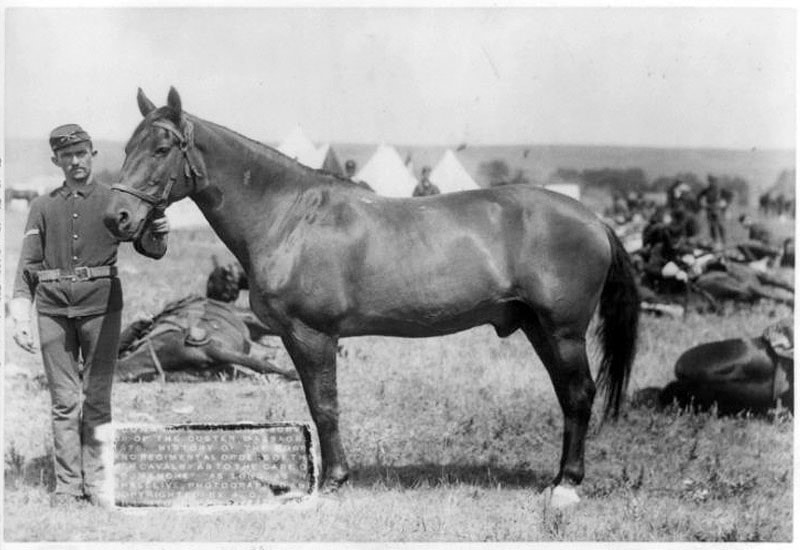Comanche was born around 1862 on the flat plains that were then called the Great Horse Desert of Texas. Like the thousands of mustangs that roamed the region, he exhibited the black stripe down his back and dun coloration of the early Spanish horses from which they were descended. Comanche had a small white star on his forehead and stood 15 hands tall. Many noted that his big head, thick neck, and short legs were out of proportion for his body. But what he lacked in beauty, he made up for in bravery.
 Myles Keogh, 1872
Myles Keogh, 1872
Captain Myles Keogh of the 7th Cavalry’s I Company liked the look of Comanche and bought him for his own personal mount. In September 1868, while fighting the Comanche in Kansas, the horse was wounded by an arrow in the hindquarters but continued to let Keogh fight from his back. Keogh named his mount “Comanche” after that engagement as a tribute to the horse’s bravery. Comanche was wounded many more times and always exhibited the same toughness that he did in his first battle.
 Myles Keogh grave site, 1879.
Myles Keogh grave site, 1879.
It is supposed that the reason Comanche was left behind is that he was close to death and the Indians assumed he wouldn’t make it. Comanche had had arrows sticking out of him and had lost a lot of blood. Four bullets had punctured the back of the shoulder, another had gone through a hoof, and he had one gunshot wound on either hind leg. His coat was matted with dried blood and soil.
"Further, Company I will see that a special and comfortable stable is fitted for him and he will not be ridden by any person whatsoever, under any circumstances, nor will be put to any kind of work.”
In 1891, Comanche died of colic, a common ailment of old horses. He was likely 29 years old. He is one of only three horses who have been given a full military funeral. The only other horses so honored were Black Jack, who served in more than a thousand military funerals in the 1950s and 1960s, and Sergeant Reckless, who served in Korea.




